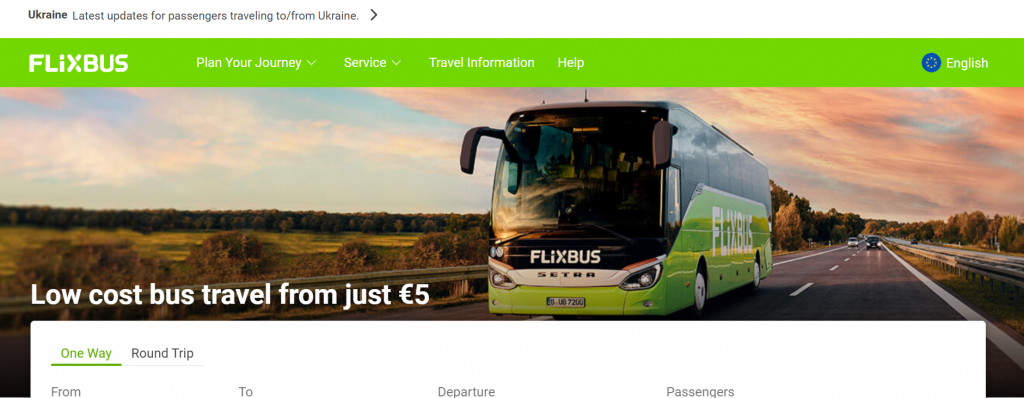
Introduction
When it comes to getting around, Europe has a lot to offer. From bustling cities to stunning rural areas, there’s something for everyone. And with such a large area to cover, it can be hard to figure out the best way to get around. That’s where bus networks come in. Not only are they affordable, but they also cover a lot of ground. In this guide, we’ll take a look at the largest bus network in Europe and why it’s the best option for travelers.
The largest bus network in Europe is operated by the Dutch company Connexxion. The network covers over 8,000 kilometers, and connects over 500 destinations throughout the Netherlands, Belgium, France, Germany and Spain. The buses are comfortable and reliable, making it a great option for those looking for an inexpensive way to get around.
The Different Types of Bus Routes
There are many different types of bus routes in Europe, so it can be hard to decide which one is the best route for you.
The following article will outline the different types of buses and the best way to use them based on your needs.
Local Bus:
This type of bus serves a small area and is usually slower than other buses.
It is good for short trips within a city or town.
Some local buses have screens that show where they are going, making navigation easier.
Metro Bus:
A metro bus is like a subway train, but with buses instead of trains.
They are often faster than local buses because they travel in dedicated lanes on the roads and can reach much farther distances.
Metro busses are useful for getting to central stations or airports quickly.
However, they may not be the best option if you need to go out into the suburbs because metro busses generally do not service those areas.
Regular Bus:
Regular buses are similar to metro buses in that they have dedicated lanes and can reach long distances, but they don’t take as long to get to their destination as metro busses do.
Regular buses are good for getting around a large city or for traveling between two major landmarks in a city.
How Long Does It Take to Go From One Point to Another by Bus?

The largest bus network in Europe is operated by Deutsche Bahn. The network covers over 23,000 kilometers of roads and connects over 1,200 destinations. It takes about two hours to go from one point to another by bus.
The largest bus network in Europe is operated by Eurolines. The company has a comprehensive network that covers most of the continent. Here’s a breakdown of how long it takes to go from one point to another by bus:
London: It takes approximately 2 hours and 45 minutes to travel from London to Manchester.
Paris: Traveling from Paris to Marseille will take about 5 hours and 30 minutes.
Istanbul: Taking a bus from Istanbul to Ankara will take about 8 hours.
Bucharest: Buses depart frequently from Bucharest for destinations all over Romania. The journey can take anywhere from 3 hours to 4 hours and 30 minutes, depending on the route taken.
What Are the Costs of Bus Travel in Europe?
There are a number of different types of bus travel in Europe, and the costs will vary depending on which route you take. In general, however, bus travel is relatively affordable when compared to other modes of transportation. The biggest downside to bus travel in Europe is the lack of consistent schedules and frequent delays.
When travelling in Europe, it can be helpful to know about the different types of buses and their corresponding costs. Below is a breakdown of the different types of buses and their associated costs in various European countries.
The cheapest way to get around Europe is by bus. Bus fares tend to be lower than train fares, and you can save even more by combining bus with rail travel. In most cases, you simply buy your ticket at the bus station or online, and then show your confirmation slip when boarding the bus.
Which Countries Have the Largest Bus Networks?
Europe is home to some of the largest bus networks in the world. These networks offer travelers a variety of routes, making it easy to get around the continent.
Some of the biggest bus networks in Europe are found in Germany and Belgium. Germany has the largest network by far, with over 7,000 routes. Belgium also has a large network, with over 4,000 routes.
Spain is also home to a large bus network. The Spanish network has over 3,500 routes. Italy also has a large bus network, with over 2,500 routes. France has a smaller but still significant network. The French network has over 1,500 routes.
Our Recommendation: Flixbus

Flixbus, Europe’s largest bus network, offers conveniently timed trips from major cities to nearby destinations. Flixbus connects passengers with stops in many of the continent’s largest cities including Berlin, Barcelona, Lisbon, Paris and Vienna. The bus network allows you to easily see all of the sites that a city has to offer without having to worry about getting on a particular bus at a specific time. Additionally, Flixbus offers online ticketing so that you can purchase your tickets ahead of time and save on costs.
Looking for an affordable and efficient way to get around Europe? Look no further than Flixbus! This bus network offers competitive prices, convenient online booking capabilities, and a wide range of routes that cover nearly every country in the continent.
Flixbus is perfect for travelers on a budget who want to explore the entire continent without breaking the bank. With ticket prices starting at just €2 per ride, this bus network is perfect for travelers looking to save both time and money. Plus, Flixbus offers a variety of convenient options like online booking and mobile app availability, so you can travel anywhere in Europe with ease.
If you’re looking for an affordable and convenient way to get around Europe, look no further than Flixbus!





